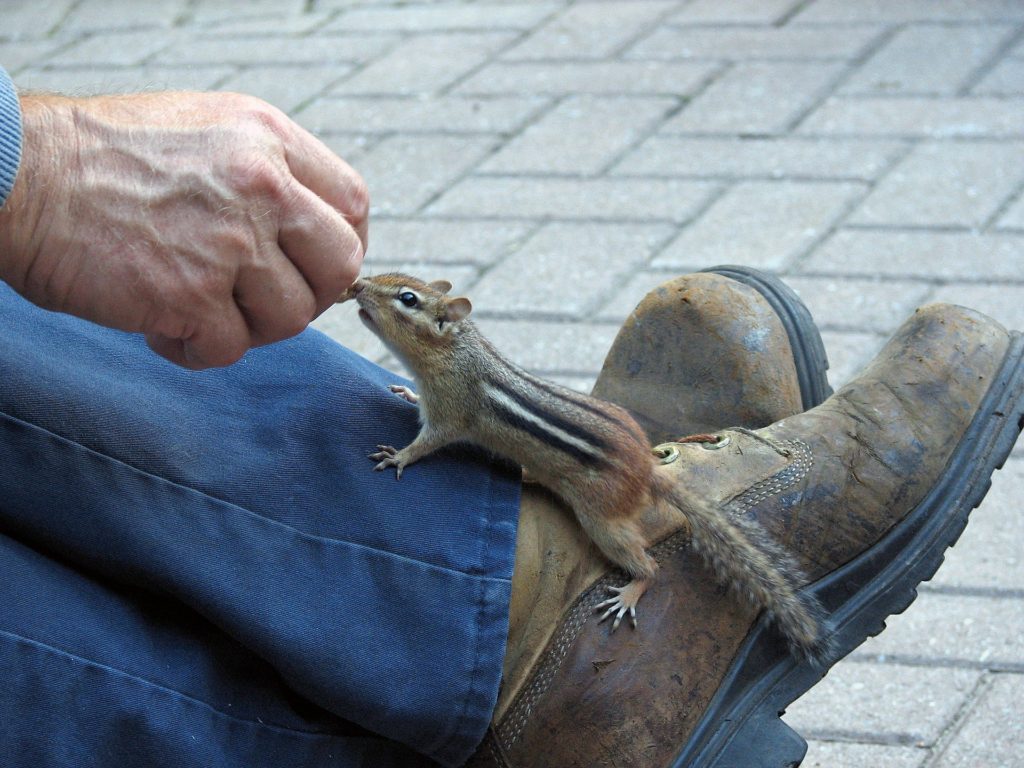
Reader Question: We own a townhome, and our paver patio is collapsing due to chipmunk damage. We have seen the chipmunks and their tunnels, so we know that is the issue. We installed the patio with homeowner association (HOA) approval. We don’t wish to do any repairs until we are aware who is liable for extermination now and in the future. We have both homeowners and umbrella insurance that we are investigating. We need advice on how to proceed.
Monty’s Answer: Chipmunks are omnivores, which means they eat a variety of items besides nuts and birdseed. Insects are a food source for chipmunks that provides a benefit to having them around. Many people consider them as being bundles of energy that are cute and fun to watch. Animated movies, songs, and fables about chipmunks have drawn favorable attention to them; but they can also cause damage.
Who is responsible?
HOA documents such as bylaws, articles of association and declarations are the most likely source for your answer. If you do not have them in your possession, the HOA will provide you copies.
The second source may be HOA meeting minutes. The HOA board has meetings that contain the business records of the HOA. These sessions deal with budgets, neighbor relations, rule interpretations and possibly even chipmunk invasions. The HOA minute’s history may reveal how they have treated requests such as yours in the past. Some HOA’s are responsible for everything outside your home’s walls, and others are not.
From an insurance perspective, your policies contain the answer, although a phone call or a note to your insurance agent should produce an instant answer. The verified source of the damage may affect the coverage.
Do not wait for relief
Consider acting sooner than later to determine the cause of the problem. Depending on the age of the building you live in and the construction date of the patio, improperly compacted soil or some other issue, such as an underground water line leak, or a sinkhole could be other candidates. Because Chipmunks and their burrow entrances are readily visible, they are sometimes identified as the source of settlement problems when another event is the actual cause.
In either event, allowing the problem to intensify waiting for outside relief may cause further damage and increase the cost to repair.
Potential solutions
If it is chipmunks causing the problem, the first line of defense may be removing the cause of their presence, their food source. They love birdseed. Make certain if you are feeding birds that the bird feeders are inaccessible to chipmunks and do not allow the seeds to scatter on the ground. No food means fewer chipmunks. This method may take a season or two to produce results.
Consideration for other family pets and wildlife you enjoy around your home is important in choosing the best option. Do an Internet search for <chipmunk removal> and you will find many solutions. Spring traps, bucket drowning, and poison are standard solutions that are very effective. I have a neighbor that seemed to enjoy using a pellet gun. Many pest control services offer chipmunk removal if you prefer not to be the executioner. Remember that some companies selling extermination products can tend to exaggerate the issue.
The humane solution
For nature lovers like myself, relocating them using live traps is a more humane solution. Check with your municipality or the county government to see if they have the staff or a department that advises on wild animal control issues. Another potential source is a nature center in the area with a small animal biologist on staff.
We had too many chipmunks in our yard. There was no damage, but we decide to reduce the population as a preventative measure. In the fall of 2015 and spring of 2016, we trapped 31 chipmunks and relocated 30 of them (one stress fatality when we left home for a couple of days). Hardware and home improvement stores are a good source for live traps. Here are five tips based on personal experience:
- Do not leave chipmunk in the cage over 3 hours (see above)
- Place cardboard or plastic under the cage during transport.
- Release in or near a wooded area.
- Bait the live trap with unsalted mixed nuts.
- Relocate them more than five miles, or they may come home.
While live trapping takes extra effort, time, and auto expense, the experience in keeping Chip & Dale, Alvin, and other chipmunks alive was rewarding.
